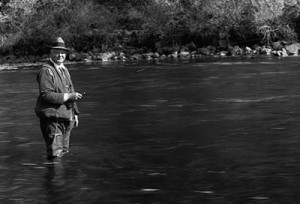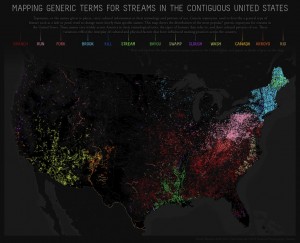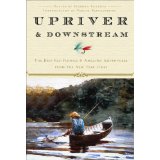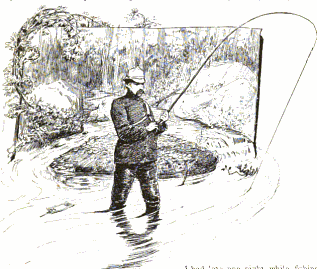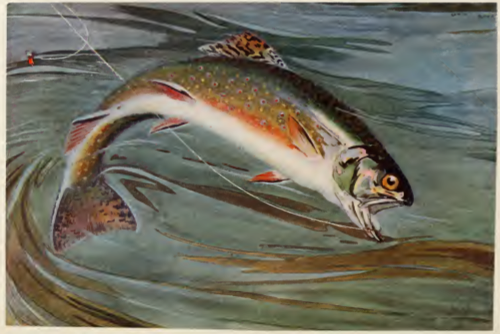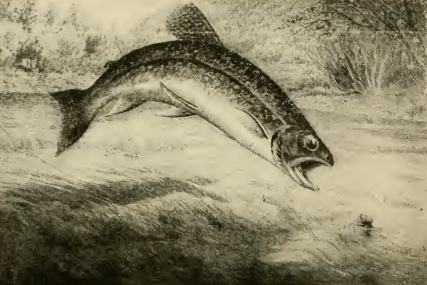 Friends gave me this nifty book for Christmas, “Upriver and Downstream.” It’s a collection of essays published in the New York Times‘ Outdoors column over the years, from well known authors including Nick Lyons, Thomas McGuane, Ernest Schwiebert, Nick Karas and many others. Being the middle of winter, with our local streams iced up pretty well, it’s good substitute entertainment.
Friends gave me this nifty book for Christmas, “Upriver and Downstream.” It’s a collection of essays published in the New York Times‘ Outdoors column over the years, from well known authors including Nick Lyons, Thomas McGuane, Ernest Schwiebert, Nick Karas and many others. Being the middle of winter, with our local streams iced up pretty well, it’s good substitute entertainment.
The book has several essays that talk about brook trout fishing. One in particular grabbed me last night, “Manhattan as a Paradise for Trout and Fly-Fishing,” by Nicholas Karas. Karas also happens to be the author of the book, “Brook Trout.” The title of his essay from 1998 is more than catchy, in 1998 or in the year 2011, or in any year within the last hundred. What he describes is incredible. You can get the same sense of how things once were throughout eastern North America by reading many old texts about fishing. I’ve highlighted one such old book that talks about brook trout fishing NEAR New York City before. But actually IN New York City?
Apparently Manhattan used to be a “sportsman’s paradise” and a destination for brook trout fishing. Yes. Manhattan. In the 1700’s, Freshwater Pond became a unique spot in what is now the Big City when the City Council restricted fishing there to the use of only “angle-rod, hook and line,” sort of like our modern single hook barbless artificial lure regulations in various pieces of streams. Freshwater Pond was located in the area between what are now Duane and Canal Streets. It was fed by Collect Pond (near Federal Plaza and The Tombs), and drained into the Hudson River. Sea-run brook trout (“salters”) were abundant here, too.
The English, who were avid fly fishers since Izaak Walton published “The Compleat Angler” over a century before they were defeated by the Colonists, popularized the sport on Manhattan. After the Revolutionary War, the area remained a hub for sportfishing for decades. Throughout the island there were streams filled with brook trout.
I just can’t even imagine that right now. Or ever. But then I came across The Alley Pond Environmental Center. For the past ten years they have been reintroducing brook trout into Alley Pond and Alley Creek, near the Long Island Expressway and the Cross Island Parkway (not Manhattan, but still New York, NY proper), with the help of Trout Unlimited.
View Larger Map
While Long Island is known for having good brook trout fishing (something I did not know until recently), the idea of brookies in New York City shocks me. That’s just really cool.
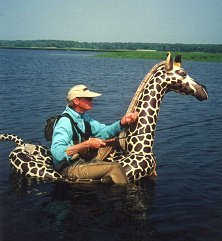 Every year, when the weather gets cooler and gray, I go through the Jack Gartside fly tying books I’ve bought and try some new patterns. The guy was a fly tying genius. Very sad that I never had a chance to meet him.
Every year, when the weather gets cooler and gray, I go through the Jack Gartside fly tying books I’ve bought and try some new patterns. The guy was a fly tying genius. Very sad that I never had a chance to meet him.